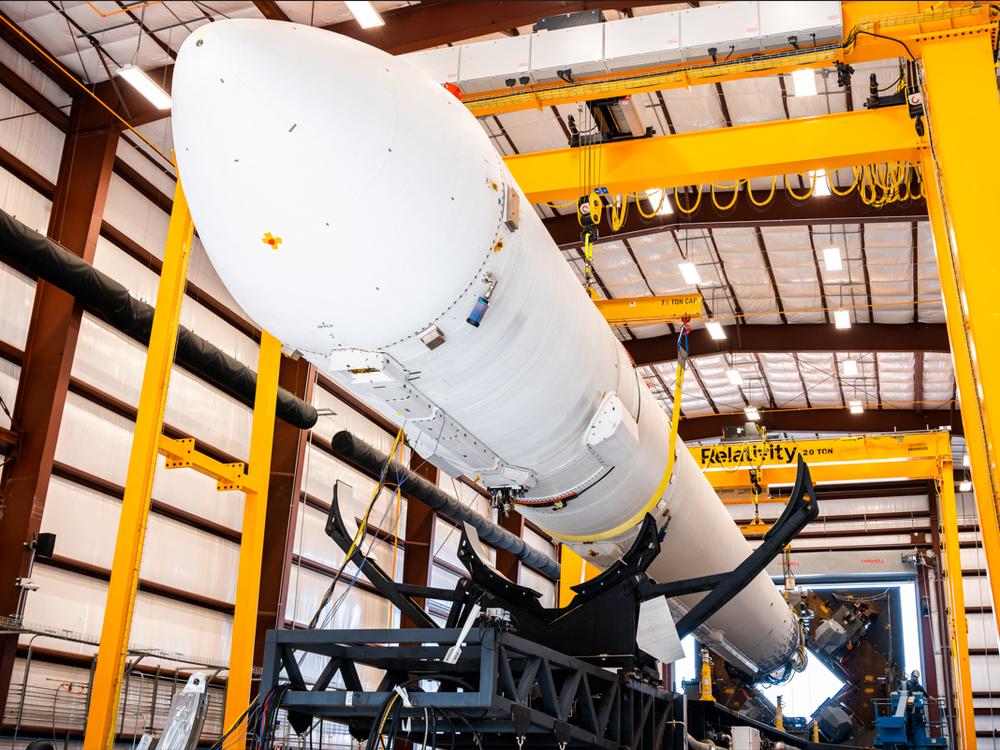Section Branding
Header Content
A 3D-printed rocket launched successfully but failed to reach orbit
Primary Content
A rocket made almost entirely of printed metal parts made its debut launch Wednesday night, but failed after three minutes of flight — far short of reaching orbit.
The uncrewed vessel, Terran 1, blasted off on Wednesday from Cape Canaveral, Fla., before crashing back down into the Atlantic Ocean.
The launch still marks a giant leap for its maker, California-based startup Relativity Space, and for the future of inexpensive space travel. About 85% of the rocket — including its nine engines — is 3D-printed at the company's factory in Long Beach, Calif.
The plan for the test mission was to send Terran 1 into a 125-mile-high (200-kilometer) orbit for a few days before plunging back through the atmosphere, incinerating itself on the way down.
The rocket did undergo a successful liftoff, completing Stage 1 separation and meeting Max Q (a state of maximum dynamic pressure) as planned. But in Stage 2, the engine appeared to lose ignition, causing Terran 1 to plummet prematurely.
The company said Wednesday's liftoff was still a "huge win, with many historic firsts," and that it would sift through the flight data to determine what went wrong.
Ahead of the launch, Relativity Space CEO Tim Ellis told NPR that getting to test mission viability alone is a testament to the versatility of printing rocket parts.
"The 3D printing technology is a big advantage because we can test and iterate and then reprint and rebuild changes in the design very quickly, with fewer limitations on factory tooling and traditional manufacturing techniques," he said.
Relativity Space is trying to cash in on the booming satellite industry — a hot market right now, thanks to companies that are sending thousands of satellites into orbit to blanket the globe with internet access. Relativity says it's already secured $1.7 billion in customer contracts.
"With the emergence of mega-constellations, we've seen the commercial share of the market outpace the growth of military satellites or science satellites so that they have become the driving force for launch," said Caleb Henry, director of research for space and satellite industry research firm Quilty Analytics.
But for its inaugural test mission, Relativity sent only a keepsake: one of its first 3D-printed rocket parts from an earlier failed design.
It's the third launch attempt for the rocket, whose mission has been dubbed GLHF, short for "Good Luck, Have Fun." A previous launch planned for Terran earlier this month was aborted at the last minute due to a temperature issue with an upper section of the rocket. A second attempt was scrubbed due to weather and technical concerns.
Relativity Space is already designing its next rocket, one that can carry heavier payloads, as it works toward its plan to create a rocket that's 95% 3D-printed materials.
Copyright 2023 NPR. To see more, visit https://www.npr.org.

